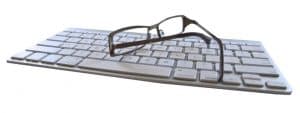Over 15% of the population suffer with visual efficiency problems – impacting their academic results and workplace performance.
Visual efficiency is understood by measuring how effectively the eyes work together as a team.
Think of a car that has a poor engine, it won’t drive very fast. Reduced visual efficiency affects the eyes the same way the engine affects the car – only now it’s the eyes that do not work too well.
Signs of visual efficiency problems?
The most frequent symptoms of visual efficiency problems include:
- Reading below grade level
- Attention or concentration difficulties
- Uses finger pointing while reading
- Poor reading comprehension
- Disruptive in class
- Closing of one eye
- Words or letters moving, jumping, or running together when reading
What is visual efficiency measured?
Visual efficiency is measured by an eye doctor by examining how effectively the eyes work together as a team.
The measurements of the eye’s teamwork are calculated based on the visual skills such as;
- Eye tracking
- Convergence
- Focusing
All these skills are essential for effective processing of visual information.
1. Eye Tracking
Eye tracking helps us gather and scan information quickly from the environment around us, this is mainly used in all learning conditions, when reading, doing homework, sitting examinations, using a computer and even on the sports field.
Eye tracking involves smooth and effortless movements of the eyes across a page or computer screen.
When eye movements are slower than normal, it may indicate an eye tracking problem. Three types of eye tracking problems are difficulties with pursuits and saccades and fixation disparities.
Individuals with an eye tracking problem may:
- Easily lose their place while reading
- Have difficulty spelling
- Have poor hand-eye coordination
- Often skip lines when reading
- Omit or substitute words while reading
If you experience any of these eye tracking problems, contact a vision therapy eye doctor near you.
2. Convergence
Your two eyes need to work in perfect unison and coordination in order to see the world in a clear and precise way. The images the brain creates may be uncomfortable or confusing when the eyes don’t function as a team.
Convergence insufficiency and convergence excess are two common eye teaming problems.
Convergence insufficiency impacts up to 15% of all students and occurs when the eyes find it difficult to focus inwards on an object, such as when reading or using a computer.
Convergence excess is the opposite: the eyes aren’t able to easily focus outward, leading to difficulties with distance vision.
Symptoms of eye teaming problems include:
- Blurred or double vision
- Difficulty concentrating
- Difficulty reading
- Headaches
- Poor depth perception
- Rubbing or squinting of the eyes
- Uncomfortable or tired eyes
SEE RELATED: Guide to Vision Therapy
Contact a vision therapy eye doctor who can assess your visual efficiency and treat any visual problems you may be experiencing.
3. Focusing Problems
Every time our eyes shift their gaze from one object to another, they need to change focus as each object is at a different position, this allows us to see everything clearly and learn effectively.
Focusing difficulties occur when the eye’s lens can’t relax and tighten or maintain a fixed focus position over many hours.
Focusing problems occur when there are difficulties either changing focus from close to far and back again or maintaining focus, such as on a book or computer screen, over an extended period.
Symptoms of focusing problems can include:
- Difficulty or avoiding reading
- Blurred vision
- Blurred vision when shifting focus from one object to another
- Frequent eye rubbing
- Holding objects close to the face in order to view them
- Headaches during or after reading
- Watery eyes
Visual efficiency and vision therapy
Visual efficiency can be significantly improved with vision therapy.
A vision therapy program involves custom-made visual exercises that create new pathways in the visual system. By regularly performing these exercises patient’s will develop improved visual skills and may notice a significant reduction in their symptoms.
LEARN MORE: Guide to Vision Therapy
Contact a vision therapy eye doctor near you to have their visual efficiency evaluated – it might change their lives!

